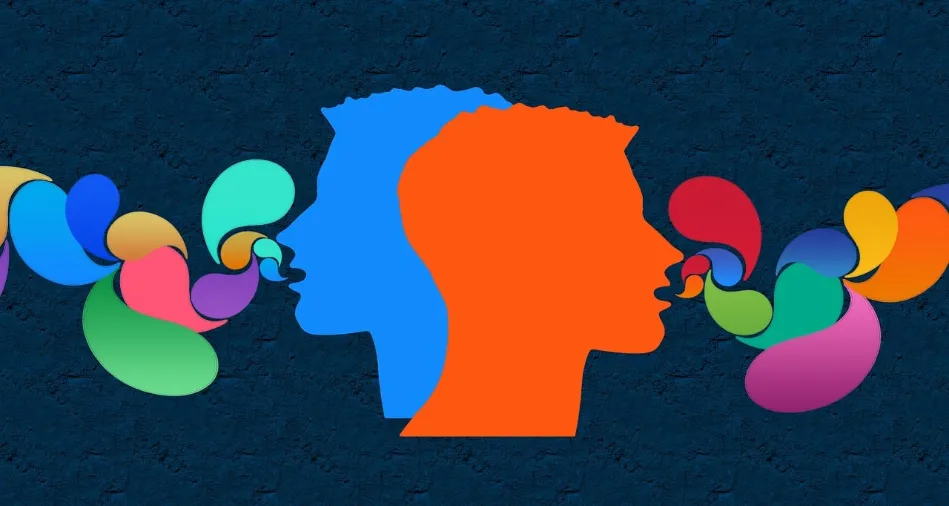[read-time]

Table of Contents
- The Psychology of Seeking Improvement
- The Counterintuitive Power of Self-Doubt
- The Role of Incentives in Feedback-Seeking Behavior
- Emotional Responses and Feedback: Debunking Myths
- Practical Applications in Education
- Enhancing Workplace Performance Through Feedback
- The Future of Feedback Research
- The Takeaway
The Psychology of Seeking Improvement
Low confidence often emerges when faced with uncertainty about our abilities. At times like this we desire to seek guidance and correction. This phenomenon, deeply rooted in human psychology, plays a crucial role in our learning processes and personal development. Recent research has shed light on how individuals with lower confidence in their performance are more inclined to actively pursue feedback, ultimately leading to enhanced learning outcomes.
This counterintuitive relationship between self-doubt and improvement challenges conventional wisdom. Many assume that confidence breeds success, but in the realm of skill acquisition and knowledge retention, a healthy dose of uncertainty can be a powerful motivator. By examining the intricate dance between self-perception, feedback-seeking behavior, and learning efficacy, we uncover valuable insights that can revolutionize approaches to education, professional development, and personal growth.
The implications of this research extend far beyond academic settings. In workplaces, rehabilitation centers, and any environment where continuous improvement is valued, understanding the drivers behind feedback-seeking behavior can lead to more effective strategies for fostering growth and achievement. As we delve deeper into this fascinating area of study, we’ll explore the mechanisms at play, the surprising benefits of negative feedback, and practical applications for harnessing the power of low confidence to fuel learning and success.
Unpacking the Study: Methodology and Key Findings
A groundbreaking study conducted at Rutgers University has provided compelling evidence for the link between low confidence and enhanced learning through feedback-seeking behavior. The research team, led by Christopher J. Cagna, PhD, of Kessler Foundation, and Jamil P. Bhanji, PhD, of Rutgers University, designed an innovative experiment to explore the determinants of feedback-seeking and their impact on learning outcomes.
Experimental Design
The study involved 59 participants who were tasked with a memory challenge that required learning word pairs. What set this experiment apart was its unique approach to feedback:
- Participants had to decide whether to pay for feedback during the learning phase
- Performance during a subsequent test phase was tied to monetary rewards
- This design created a scenario where participants had to weigh the cost of feedback against the potential for improved performance and higher earnings
Key Observations
Analysis of participant behavior and performance yielded several noteworthy findings:
- Uncertainty as a Driver: Participants were significantly more likely to purchase feedback when they felt uncertain about their learning accuracy
- Efficacy of Negative Feedback: Corrective feedback following incorrect responses proved particularly effective in improving test performance
- Emotional Factors: Contrary to expectations, emotional responses and physiological arousal (measured through skin conductance) did not significantly predict feedback-seeking behavior
These results paint a clear picture: low confidence in one’s performance serves as a powerful motivator for seeking out corrective information, which in turn leads to better learning outcomes.
The Counterintuitive Power of Self-Doubt
At first glance, the idea that low confidence can drive success might seem paradoxical. After all, we’re often told that believing in ourselves is key to achievement. However, when it comes to learning and skill development, a certain level of self-doubt can be incredibly beneficial.
Embracing Uncertainty
When individuals lack confidence in their performance, they’re more likely to:
- Recognize gaps in their knowledge or skills
- Seek out opportunities for improvement
- Be open to constructive criticism
- Engage more deeply with learning materials
This openness to feedback and willingness to acknowledge areas for growth creates a fertile ground for rapid improvement and skill acquisition.
The Pitfalls of Overconfidence
In contrast, excessive confidence can sometimes hinder learning:
- Overestimating one’s abilities may lead to complacency
- Highly confident individuals might be less likely to seek out or accept feedback
- Missed opportunities for growth due to a false sense of mastery
By understanding the value of healthy self-doubt, learners and educators can create environments that encourage continuous improvement and foster a growth mindset.
Negative Feedback: A Bitter Pill with Sweet Results
One of the most intriguing findings from the study is the particular effectiveness of negative feedback in promoting learning. While receiving criticism or correction can be uncomfortable, it often provides the most valuable opportunities for improvement.
The Learning Value of Being Wrong
Negative feedback serves several crucial functions in the learning process:
- Highlights specific areas for improvement
- Challenges existing assumptions or misconceptions
- Motivates more focused study or practice
- Encourages deeper engagement with the material
Overcoming the Emotional Hurdle
Despite its benefits, negative feedback can be difficult to accept due to:
- Ego protection mechanisms
- Fear of judgment or failure
- Discomfort with acknowledging mistakes
The study’s findings suggest that the informational value of feedback often outweighs these emotional discomforts, especially when there are clear incentives for improvement (such as monetary rewards in the experiment).
Strategies for Embracing Constructive Criticism
To harness the power of negative feedback:
- Reframe criticism as an opportunity for growth
- Focus on the specific information provided, rather than emotional reactions
- Set clear goals that align with receiving and implementing feedback
- Celebrate the learning process, including mistakes and corrections
By cultivating a mindset that values negative feedback as a tool for improvement, individuals can accelerate their learning and achieve better outcomes in various domains.
The Role of Incentives in Feedback-Seeking Behavior
The study’s design, which tied performance to monetary rewards, highlights the important role that incentives play in motivating feedback-seeking behavior. This aspect of the research offers valuable insights for designing effective learning environments across various settings.
Types of Incentives
While the study focused on financial rewards, incentives can take many forms:
- Monetary compensation
- Career advancement opportunities
- Academic grades or recognition
- Personal achievement and skill mastery
- Social approval or status
Balancing Intrinsic and Extrinsic Motivation
The most effective learning environments often combine:
- Intrinsic motivators (personal interest, curiosity, desire for mastery)
- Extrinsic motivators (rewards, recognition, tangible benefits)
By aligning feedback-seeking behavior with clear, meaningful incentives, educators and managers can encourage a more proactive approach to learning and improvement.
Designing Effective Incentive Systems
To promote feedback-seeking behavior:
- Clearly communicate the connection between feedback, improvement, and rewards
- Offer a mix of short-term and long-term incentives
- Ensure that incentives are attainable and proportionate to effort
- Recognize and reward the process of seeking and implementing feedback, not just end results
Thoughtfully designed incentive systems can help overcome the natural reluctance to seek out potentially negative feedback, fostering a culture of continuous improvement.
Emotional Responses and Feedback: Debunking Myths
A surprising aspect of the study’s findings was the minimal role that emotional responses and physiological arousal played in predicting feedback-seeking behavior. This challenges common assumptions about the impact of stress or anxiety on learning processes.
The Emotional Landscape of Learning
Many people assume that:
- Stress inhibits effective learning
- Anxiety about performance discourages feedback-seeking
- Emotional reactions to criticism hinder improvement
However, the study suggests that these factors may not be as influential as previously thought when it comes to decisions about seeking performance feedback.
Cognitive vs. Emotional Drivers
The research indicates that cognitive factors, particularly uncertainty about performance, play a more significant role in feedback-seeking behavior than emotional responses. This suggests that:
- Rational decision-making processes dominate in learning contexts
- The desire for information and improvement can override emotional discomfort
- Learners may be more resilient to emotional stress than often assumed
Implications for Learning Environments
Understanding the limited role of emotional factors in feedback-seeking behavior has important implications:
- Focus on providing clear, actionable feedback rather than managing emotional responses
- Encourage a cognitive approach to self-assessment and improvement
- Design learning experiences that emphasize information-seeking over emotional comfort
By shifting focus away from emotional management and towards fostering a curiosity-driven, information-seeking mindset, educators and trainers can create more effective learning environments.
Practical Applications in Education
The insights gained from this research have significant implications for educational settings, from primary schools to universities and adult learning programs. By understanding the relationship between low confidence, feedback-seeking behavior, and improved learning outcomes, educators can develop more effective teaching strategies.
Fostering a Feedback-Friendly Classroom
To create an environment that encourages feedback-seeking:
- Normalize uncertainty and questions
- Provide frequent, low-stakes opportunities for self-assessment
- Offer various channels for seeking feedback (e.g., written, verbal, peer-to-peer)
- Celebrate improvements and the process of learning, not just final results
Tailoring Feedback Mechanisms
Different types of feedback can be more effective for different learners and situations:
- Immediate vs. delayed feedback
- Detailed explanations vs. quick right/wrong indicators
- Peer feedback vs. instructor feedback
- Written feedback vs. face-to-face discussions
By offering a variety of feedback options, educators can cater to different learning styles and preferences.
Incorporating Technology
Digital tools can enhance feedback processes in education:
- Automated quizzes with instant feedback
- Learning management systems that track progress and highlight areas for improvement
- AI-powered tutoring systems that adapt to individual learning needs
- Virtual reality simulations for skill practice and feedback in safe environments
Leveraging technology can provide more frequent and personalized feedback opportunities, supporting the feedback-seeking behaviors that drive learning.
Enhancing Workplace Performance Through Feedback
The principles uncovered in this research have direct applications in professional settings, where continuous improvement and skill development are crucial for success. By fostering a culture that values feedback-seeking behavior, organizations can enhance employee performance and drive innovation.
Creating a Feedback-Rich Work Environment
To encourage feedback-seeking in the workplace:
- Implement regular performance reviews that focus on growth opportunities
- Establish mentorship programs that facilitate ongoing feedback exchanges
- Encourage peer-to-peer feedback sessions
- Provide training on how to give and receive constructive feedback effectively
Aligning Feedback with Career Development
Connecting feedback-seeking behavior to professional growth can increase motivation:
- Tie feedback implementation to promotion criteria
- Offer skill development opportunities based on feedback received
- Recognize and reward employees who actively seek and apply feedback
Overcoming Barriers to Feedback in Professional Settings
Common challenges in workplace feedback include:
- Fear of negative career impacts
- Power dynamics between managers and employees
- Time constraints in fast-paced work environments
- Cultural differences in communication styles
Addressing these barriers through training, policy changes, and cultural shifts can create a more open and growth-oriented workplace.
Feedback Strategies in Rehabilitation Settings
The findings of this study have particularly interesting applications in rehabilitation contexts, where feedback plays a crucial role in recovery and skill reacquisition. Whether dealing with physical injuries, cognitive impairments, or behavioral health issues, the principles of feedback-seeking behavior can be leveraged to enhance treatment outcomes.
Tailoring Feedback for Rehabilitation Patients
Effective feedback strategies in rehabilitation might include:
- Setting clear, achievable goals and providing feedback on progress
- Using visual aids to track improvements over time
- Incorporating technology for real-time feedback during exercises
- Balancing positive reinforcement with constructive criticism
Empowering Patients Through Self-Assessment
Encouraging patients to actively engage in their own assessment can promote feedback-seeking behavior:
- Teach self-monitoring techniques
- Provide tools for tracking symptoms or progress
- Encourage patients to formulate questions about their treatment and recovery
Addressing Psychological Barriers
Rehabilitation often involves overcoming psychological hurdles:
- Fear of failure or setbacks
- Frustration with slow progress
- Anxiety about regaining lost abilities
By framing feedback as a tool for empowerment and progress, rather than a judgment, rehabilitation professionals can help patients embrace the feedback process more readily.
The Future of Feedback Research
While the current study provides valuable insights into the relationship between confidence, feedback-seeking behavior, and learning outcomes, it also opens up new avenues for further research. As our understanding of these dynamics grows, we can expect to see more sophisticated and effective approaches to learning and performance improvement across various domains.
Emerging Areas of Study
Future research directions might include:
- Long-term effects of feedback-seeking behavior on career trajectories
- Cultural differences in attitudes towards feedback and self-assessment
- The impact of different feedback delivery methods (e.g., AI-driven vs. human)
- Neurological basis of feedback processing and its relation to learning
Technological Innovations in Feedback
Advancements in technology are likely to revolutionize how we give and receive feedback:
- Wearable devices that provide real-time performance feedback
- Virtual reality environments for immersive feedback experiences
- Machine learning algorithms that personalize feedback based on individual learning patterns
- Brain-computer interfaces that could provide direct neural feedback
Interdisciplinary Approaches
The complex nature of feedback and learning calls for collaboration across disciplines:
- Psychology and neuroscience to understand cognitive processes
- Education and instructional design to develop effective teaching methods
- Computer science and AI for advanced feedback systems
- Organizational behavior for workplace applications
By bringing together insights from various fields, researchers can develop a more comprehensive understanding of how to optimize feedback for learning and performance improvement.
The Takeaway
Embracing the Power of Uncertainty
The counterintuitive relationship between low confidence and enhanced learning outcomes challenges us to rethink our approaches to education, professional development, and personal growth. By recognizing the value of uncertainty and the power of feedback-seeking behavior, we can create environments that foster continuous improvement and unlock human potential.
Key takeaways from this research include:
- Low confidence can be a powerful motivator for seeking feedback and improving performance
- Negative feedback, while sometimes uncomfortable, often provides the most valuable learning opportunities
- The desire for information and improvement can override emotional discomfort in learning situations
- Effective feedback strategies should be tailored to specific contexts, whether in education, the workplace, or rehabilitation settings
As we move forward, embracing these insights can lead to more effective learning strategies, more dynamic workplaces, and better outcomes in various fields. By cultivating a mindset that values feedback and sees uncertainty as an opportunity for growth, we can harness the surprising power of low confidence to drive success and achievement.














